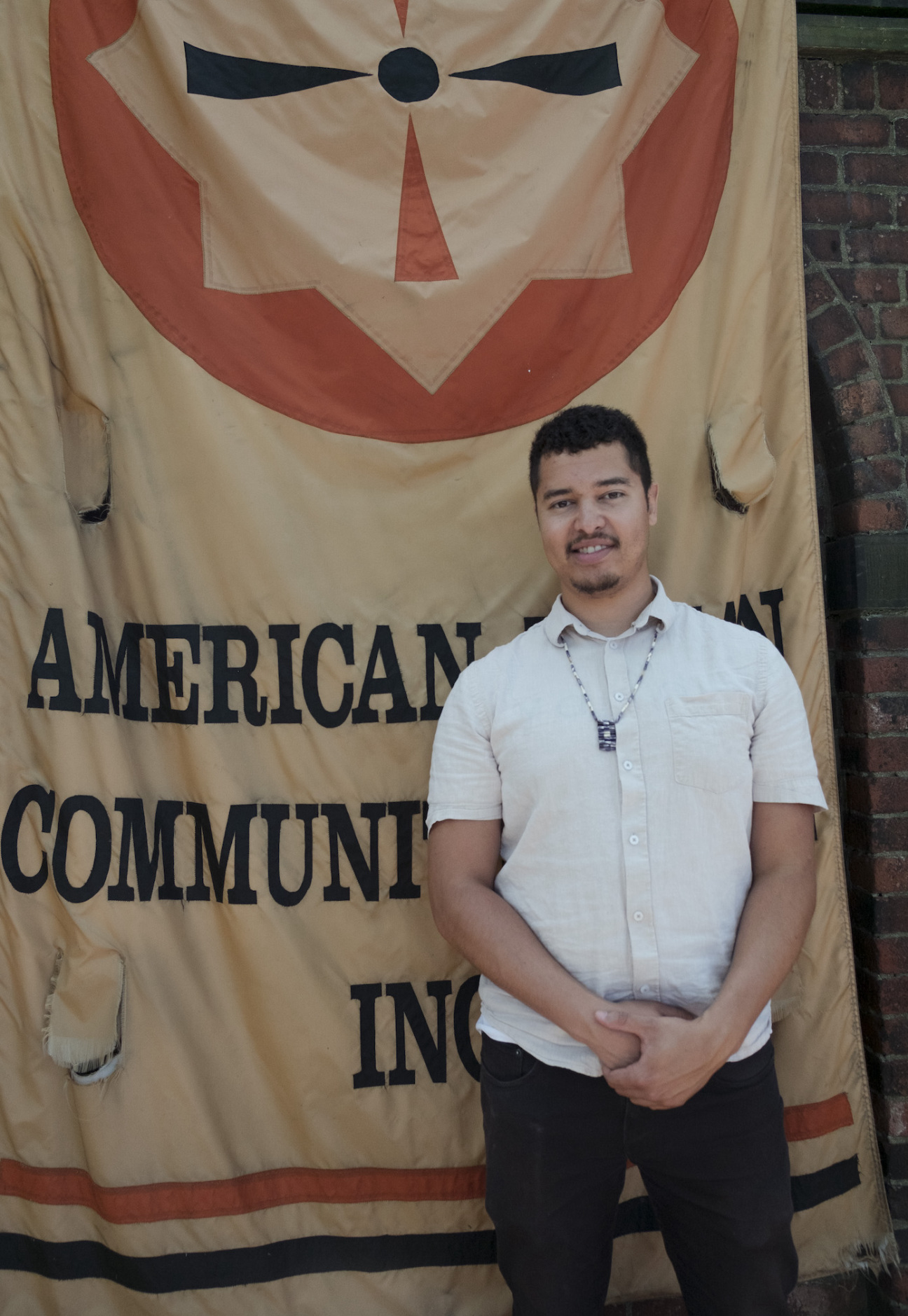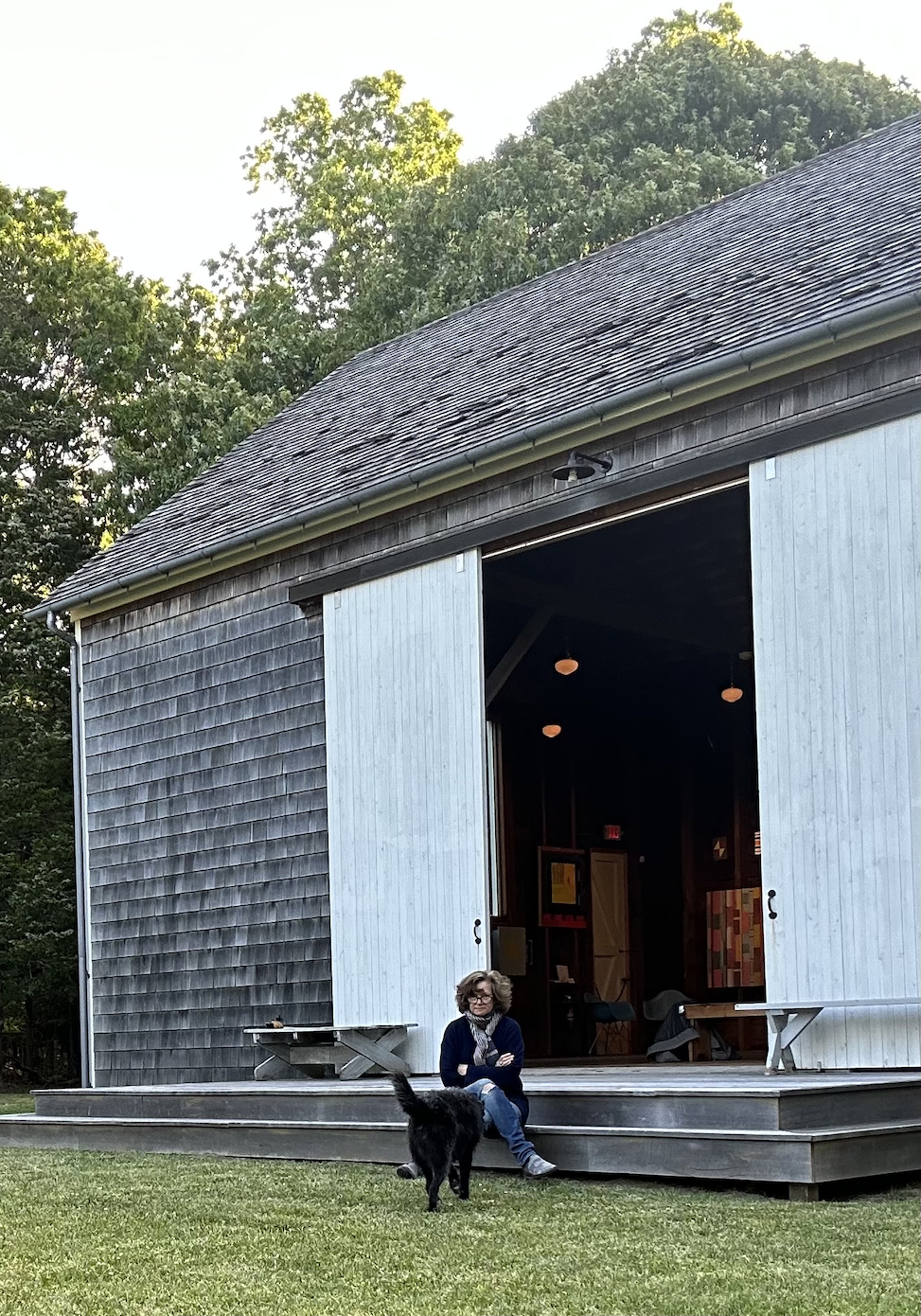
CULTURED: Both of you have deep roots in the community here. Jeremy, you were born and raised in Southampton, on the Shinnecock Reservation, and you founded Ma's House in 2020. Jess, you spent your childhood summers out East, have lived here full-time for nearly 20 years, and direct The Arts Center at Duck Creek. What changes in the community have either of you witnessed recently?
Jess Frost: It’s gotten a lot more diverse, and there’s a broader demographic. I feel like there’s a sort of middle-class that’s developed, and the community has become a lot more colorful. Would you agree, Jeremy?
Jeremy Dennis: There’s definitely more of a year-round community, especially after the pandemic hit, which was when Ma’s House was just getting going. People are invested, and they want to see more programming and community gatherings. There has been such a rich art community here historically, and today there’s a need for new spaces that follow new models.
Frost: I think that organizations with ethical systems like Jeremy’s or Duck Creek’s thrived in that moment [of the pandemic] because our goals are not necessarily to make money. We’re trying to support the community.
CULTURED: Jeremy, do you find that by having a greater platform like Ma’s House, you are bringing more awareness to the Indigenous people of this region and others who are not as well represented?
Dennis: Oh, absolutely. Outside of the Shinnecock Indian Powwow—the largest powwow on the East Coast—there are so few opportunities for us to communicate more broadly. The powwow is the only time in the year when all the artists sell their work to support their families, but it only lasts four days. We’re trying to bring in more support for our community and other artists of color year-round.
CULTURED: Beyond the many places bearing the Shinnecock name in town, how else is the Nation represented locally?
Dennis: In Southampton—which is our closest town, just a five-minute drive [from the reservation]—there’s almost no Native or Shinnecock representation, aside from this old illustration featuring a Shinnecock person and a colonist meeting on the beach, and I think those images are only visible as stickers on garbage cans in town.
There’s so much more that we, the Shinnecock Nation and businesses, can potentially do, but prices are so prohibitive for us to have, for example, a Shinnecock storefront or community space. We are the original stewards of Southampton, so I find it strange that there’s no kind of acknowledgment by the town, or most of its residents, of our historic friendship contributions and peaceful coexistence with those who reside in the Hamptons today. It’s almost as if we were intentionally being erased or made invisible by our neighbors.
CULTURED: Do you feel that way?
Dennis: That’s a whole bigger conversation. But we do have a lot of clashes over land usage with the town. Of course the biggest industry out here is real estate, and the town gets a lot of the tax revenue from selling and developing our ancestral and sacred burial sites.

Frost: It is an interesting microcosm of what’s happening across the country. There should be more in the towns that introduce people to what we all value the most about this place, which is the land and the history of the land. The reservation is a really important part of our history, and I have to say, I really do see so many more people digging into that. Jeremy’s done land acknowledgments for several organizations out here, including Duck Creek.
CULTURED: What is the significance of land acknowledgments, Jeremy, especially since there are still “clashes” over land usage, as you noted earlier?
Dennis: Land acknowledgments are reasonable first steps to establish better relations between institutions and local Indigenous communities. They provide education and context for the land on which they operate, and state the displacement of Indigenous communities in that area.
After understanding, hopefully action can follow—this includes programming, educational opportunities, and fundraising for Indigenous causes, all the way up to considering land-back initiatives. And this is why Ma’s House exists, why Duck Creek exists. We want to build community, bring together people who have historically never been able to come together and celebrate differences—and the things that make us similar. There’s so much still to be done.










 in your life?
in your life?

